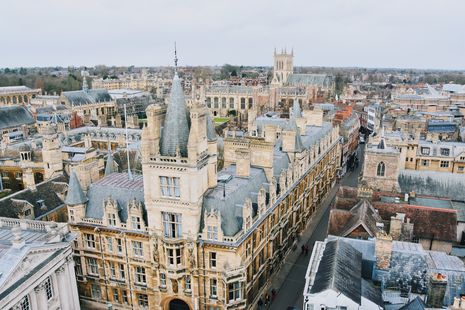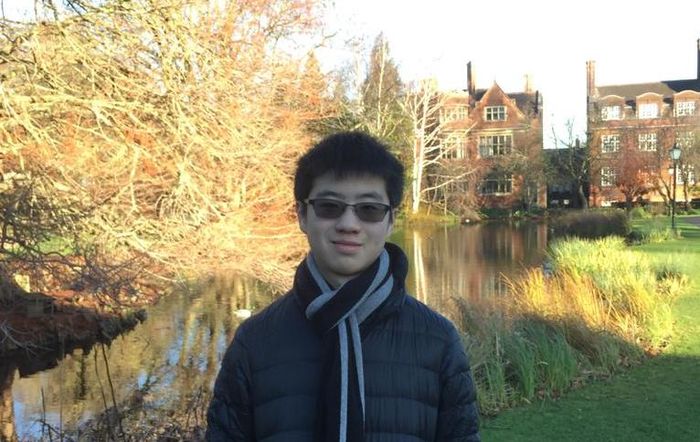Uncomfortable Cambridge: the legacy of exclusion and inequality
Embarking on the Uncomfortable Cambridge walking tour, Staff Writer Imaan Irfan explores the city’s contentious history

It is a hot summer’s day and the Singing Bin Man is strumming away on Trumpington Street. King’s Parade is teeming with tourists snapping photos, pink-capped kids, gelato softening in the sun.
Uncomfortable Cambridge, the walking tour I’m about to embark on, will disrupt this postcard-perfect scene. It is an extension of Uncomfortable Oxford, a social enterprise that was established by students in the ‘Other Place’ to interrogate the university’s legacies of power and inequality. Our group is an eclectic one consisting of myself, a couple of students from Vienna, a BBC reporter and photographer, and an educator from the Museum of Archeology and Anthropology.
We begin at Great St Mary’s, with a discussion on tensions between ‘town and gown’, dating back to the causes of the Peasants’ Revolt, which reached Cambridge in 1381. I’m reminded of the disparities that still exist: in 2019, a homeless woman gave birth to twins in the shadow of Trinity College, and life expectancy in the most deprived areas of Cambridge is on average 11.6 years lower than in the least deprived areas.
The colleges encroach on the city, barring access to shortcuts around Cambridge. Unsupplemented by a handy camcard, we take the long way around, winding around the city and along the backs. King’s Chapel looms behind a meadow of oxeye daisies and cornflowers; it’s a pleasant, bucolic scene, one which only makes our conversation more striking as we talk about violent colonial policies and the failings of great men: Cromwell’s legacy in Ireland; Churchill’s contested role in the Bengal famine.
"Newnham’s history renders its iron gates a necessary precaution against the vitriol of male undergraduates"
The walking tour makes us aware of the physical spacing of the city. For all the jokes about Girton being far away, it is telling that colleges that were historically instituted for women are isolated from the city centre. When we reach Newnham’s Pfeiffer Arch, my own room is only a few steps away. Like many Cambridge colleges, its iron gates are intended to keep people out, but Newnham’s history renders this a necessary precaution against the vitriol of male undergraduates. When a motion to grant women full degrees was defeated in 1861, an effigy of a female cyclist was hanged on King’s Parade, decapitated and stuffed through the Clough gates in celebration. When a vote to award women full membership of the University failed in 1921, the same gates were attacked by over a thousand undergraduates.
Famously, when women were finally accepted to Magdalene College as late as 1988, (as had happened in St John’s) the flag was hung at half mast, with many male students, fellows and porters mourning the death of the last bastion of exclusively male education by donning black armbands. We are asked about the relevance of self-proclaimed women’s colleges: I mention that for many, particularly those from minority religious and cultural backgrounds, Newnham’s red-brick and gardens, captured by Virginia Woolf in ‘A woman’s college from the outside’, continues to be a safe haven.
"But learning about our history only matters if we use it to advocate for the living and for the ordinary"
In A Room of One’s Own, Woolf describes being denied access to the library in an unnamed college and chased off the grass by an overzealous porter; “His face expressed horror and indignation [...] he was a Beadle; I was a woman. This was the turf; there was the path. Only the Fellows and Scholars are allowed here; the gravel is the place for me.”
Having passed through formidable gates, college lawns are still contested territory, demarcating the shoes that are permitted to tread there, and the shoes which are not.
We walk down Silver Street to the Mathematical Bridge, speaking about the impermanence of efforts which seek to honour marginalised communities, the ephemeral exhibitions, temporary interest, the times when advocacy doesn’t go far enough. The route has been permeated with discussions of places, objects and absence, such as the endurance of the Rustat memorial in the chapel of Jesus College (despite the legal efforts of the college). On the other hand, an empty niche by the entrance of St Catharine’s signals the removal of a plantation bell, dregged up from the bottom of the Demarara some time after a slave revolt in Guyana. The gap in the tower makes the bell’s absence truly noticeable, seeming to haunt its former abode with its silent peals.
We end up back on King’s Parade, discussing Alan Turing’s posthumous pardon in front of his blue plaque. “Why do we find it easier to advocate for dead people rather than the living?” asks Leah, our tour guide.
“I guess ‘cos dead people can't talk back.”
Indeed it seems much easier to grant people their humanity in reward for exceptional deeds, than it is to acknowledge that unexceptional individuals are equally worthy of our sympathy. But learning about our history only matters if we use it to advocate for the living and for the ordinary.
The sun reflects off the cobbled streets and intricately carved stone buildings, buildings which are shaped by the legacies of exclusion and inequality. Uncomfortable Cambridge brings to light the city’s unsettling history, prompting reflection on the places and institutions we are so strongly affiliated with. Two of us continue to sit on the wall after the tour has ended. As tourists continue to click their pictures, we both let out a sigh.
 News / Clare Hall spent over £500k opposing busway 24 December 2025
News / Clare Hall spent over £500k opposing busway 24 December 2025 News / Caius mourns its tree-mendous loss23 December 2025
News / Caius mourns its tree-mendous loss23 December 2025 Comment / The ‘class’ of Cambridge24 December 2025
Comment / The ‘class’ of Cambridge24 December 2025 Comment / Yes, I’m brown – but I have more important things to say22 December 2025
Comment / Yes, I’m brown – but I have more important things to say22 December 2025 Interviews / Politics, your own way: Tilly Middlehurst on speaking out21 December 2025
Interviews / Politics, your own way: Tilly Middlehurst on speaking out21 December 2025











